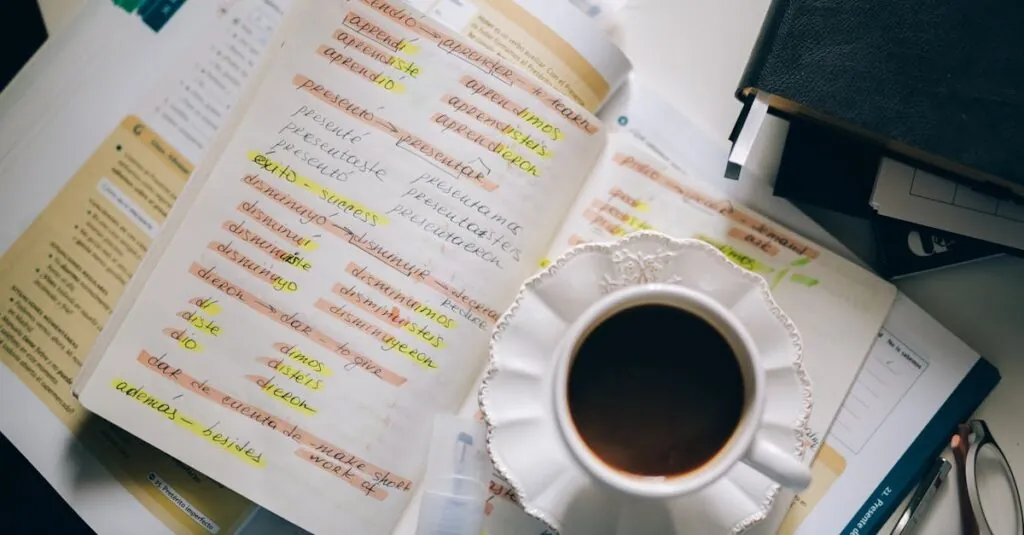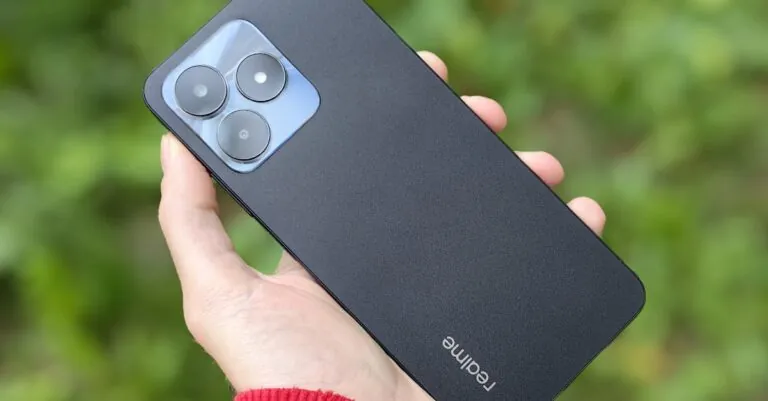In a world overflowing with languages, navigating translation can feel like trying to solve a Rubik’s Cube blindfolded. Whether it’s for travel, business, or just impressing that cute barista who speaks five languages, mastering translation can save time and avoid awkward misunderstandings. Who wants to accidentally ask for a “large goat” instead of a “large coat”?
Overview of Language Translation Hacks
Language translation hacks streamline communication across diverse languages. Utilizing efficient strategies can significantly improve translation accuracy and prevent misunderstandings.
Using available technology often enhances language translation efforts. For instance, employing translation apps enables quick access to multilingual assistance. Many mobile applications provide instant translations, making them useful for travelers and business professionals.
Context is key in translation. Relying on context helps ensure idiomatic and cultural nuances are respected. Employing tools that recognize context allows for more natural translations that resonate with native speakers.
Collaborative translation can enhance clarity. Engaging bilingual individuals or native speakers improves translation quality through real-time feedback. This method is particularly effective for translating marketing materials where tone and style hold significance.
Utilizing small, common phrases facilitates easier translation. Short, simple sentences reduce complexity and avoid potential ambiguity. Focusing on essential concepts assists in delivering clear messages without losing meaning.
Learning basic phrases in the target language cultivates better communication. Simple greetings and expressions can bridge gaps and create rapport with locals. Empathy in trying to communicate in their language often leads to positive experiences.
Incorporating visual aids complements verbal and written translations. Diagrams, pictures, and gestures reinforce understanding. Many times, visuals eliminate confusion by providing context that words alone may not deliver.
Prioritizing clarity in translated content boosts effectiveness. Clear objectives contribute to more successful communication outcomes. Understanding the target audience ensures that translations meet their expectations.
Popular Translation Tools
Various translation tools simplify communication and enhance understanding across languages. These tools cater to different needs and preferences.
Tool Comparisons
Google Translate offers quick translations and supports over 100 languages. DeepL stands out with its nuanced translations, especially for European languages. Microsoft Translator includes a unique conversation mode that aids in multilingual discussions. Each tool varies in strengths, so users should consider their specific requirements when choosing.
Best Free Options
Google Translate remains a top choice due to its extensive language support and ease of use. Microsoft Translator also provides excellent features without cost. iTranslate ensures a user-friendly interface with offline access to some functionalities. These free options empower users, making translation accessible for everyone, regardless of budget.
Effective Techniques for Accurate Translation
Accurate translation hinges on context and cultural nuances. Mastering these elements enhances communication across languages.
Context Awareness
Context plays a pivotal role in achieving effective translations. Understanding the subject matter and the intended audience clarifies nuances. Consider regional variations and social cues that might alter meaning. For instance, the same word can imply different meanings depending on its usage. Prioritizing context ensures translations resonate with the target audience, preventing potential misunderstandings. Relying on contextual clues not only enhances accuracy but also enriches the overall translation experience.
Idiomatic Expressions
Translating idiomatic expressions poses a unique challenge. These phrases often convey meanings that don’t translate directly. Recognizing common idioms specific to a language reveals cultural significance. For example, “kick the bucket” means to die in English, a phrase that makes little sense if translated literally into other languages. Emphasizing idiomatic expressions helps convey the original message’s intent and emotion. By employing equivalent phrases in the target language, translators maintain the original flavor while ensuring clarity and relatability. Prioritizing idioms can transform a basic translation into a more impactful and authentic communication piece.
Tips for Translating Less Common Languages
Finding effective translation strategies for less common languages proves essential for clear communication. Utilize specialized translation apps that focus on niche languages, enabling smoother interactions. Collaboration with native speakers enhances accuracy and fosters cultural understanding. Incorporating local dialects ensures content resonates with the target audience, making translations more relatable.
Focusing on common phrases significantly aids in translations, as these phrases often serve as building blocks for communication. Learning basic greetings and expressions can go a long way in establishing rapport and building trust. Exploring language learning resources, such as online courses or language exchange platforms, further supports comprehension and fluency.
Employing visual aids helps bridge language gaps in contexts where words alone may fall short. Infographics or images can provide instant clarity and context, acting as visual dictionaries. Experimenting with audio tools for pronunciation assists in mastering challenging sounds unique to specific languages.
Tracking regional variations within less common languages is crucial for maintaining relevance. Accents or local terminology can change meanings, so understanding these differences supports precision. Regularly updating the translation approach based on feedback ensures lasting effectiveness.
Analyzing cultural contexts remains vital for delicate translations. Some phrases may not have direct equivalents; therefore, substitution with an appropriate cultural reference retains meaning and emotion. Engaging with the local community opens doors to insights that purely linguistic resources may miss.
Prioritize clarity and accessibility in translations to effectively address the needs of diverse audiences. These techniques empower communicators to navigate the complexities of less common languages and achieve effective interactions smoothly.
Incorporating Technology in Translation
Technology transforms translation practices, offering tools that enhance communication across languages. Utilizing modern tools empowers users to navigate linguistic barriers efficiently.
AI and Machine Learning Advances
AI and machine learning technologies drastically improve translation accuracy. These advancements enable software to learn from vast datasets, enhancing contextual understanding and idiomatic expressions. Neural machine translation models excel at recognizing complex language patterns, producing results that often rival human translators. For instance, Google Translate employs deep learning to refine its translations continually. Companies are integrating AI-driven tools into workflows for efficient content translation while maintaining quality.
Mobile Apps for On-the-Go Translation
Mobile apps simplify translation for users on the move. These applications provide instant translations through text input, voice recognition, and camera functions for scanning written content. Popular choices like Microsoft Translator and iTranslate offer convenient offshore features, allowing users to access essential functions without an internet connection. Voice translation functions enable real-time conversations in multiple languages, fostering smoother communication in diverse settings. Such mobile technology makes translation readily accessible, enhancing interactions during travel or business trips.
Mastering language translation is essential in today’s interconnected world. By leveraging technology and understanding cultural nuances, individuals can navigate language barriers more effectively. Utilizing translation apps and collaborating with bilingual speakers enhances clarity and accuracy in communication. Embracing simple phrases and visual aids makes translations more relatable and impactful. As AI-driven tools continue to evolve, they offer greater accuracy and accessibility, empowering users to communicate with confidence. Prioritizing clear and effective translation not only meets the needs of diverse audiences but also enriches personal and professional interactions across cultures.






